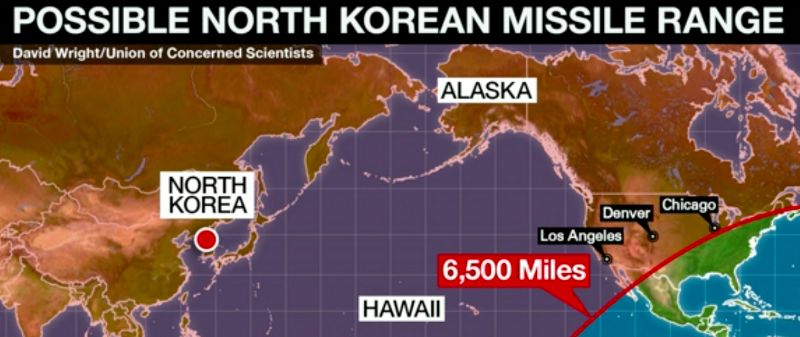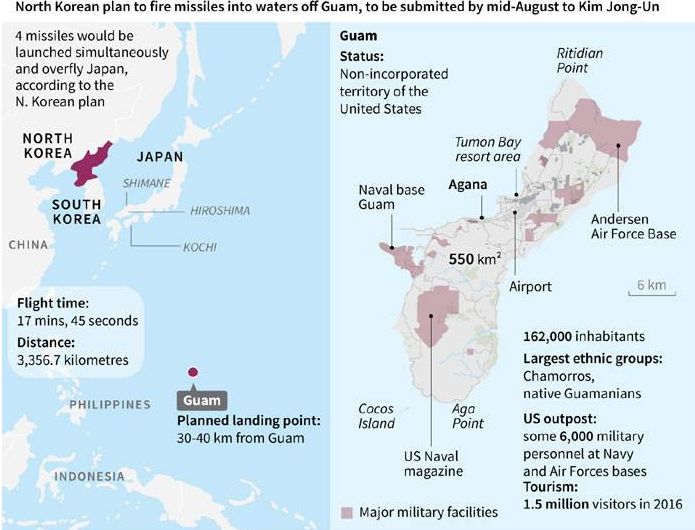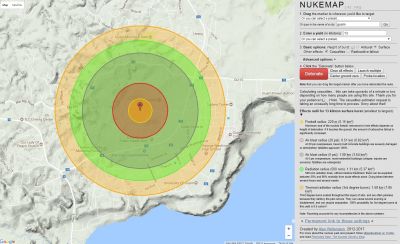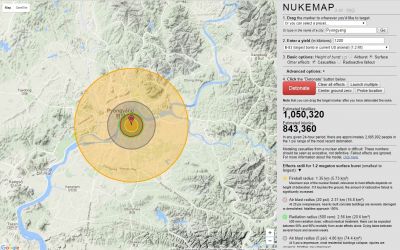By Eric Vandenbroeck
I suspect that N.Korea
will start to back off once sanctions become a threat whereby another question
will be how long before they might indeed do another ICBM test...
In fact, on Wednesday 6 July, North Korea’s leader, Kim Jong-un, in what
appears to be a staged act of defiance even singled out the American territory
of Guam as a potential target. Whereby today, Thursday, Pyongyang's state-run
KCNA news agency added that its army
would complete plans in mid-August to fire four
intermediate-range missiles over Japan to land near Guam as North Korea and the United
States engaged in increasingly heated rhetoric this week over the North's
nuclear weapons program.

Plus then today, according to
NBC News, two senior military officials and two senior retired officers
explained that pairs
of B-1s have conducted 11 practice runs of a similar mission
since the end of May, the last taking place on Monday. The training has
accelerated since May, according to officials. In an actual mission, the
non-nuclear bombers would be supported by satellites and drones and surrounded
by fighter jets as well as aerial refueling and electronic warfare planes.

In fact just hours after Trump made his heated vow to unleash "fire and fury" on North Korea if
provocations by the Kim regime continued, the US Air Force issued a very clear
statement in which it explicitly said that it was "ready to fight
tonight," launching an attack of B-1 bombers if so ordered:
“How we train is how we fight and the more we interface with our allies,
the better prepared we are to fight tonight,” said a 37th EBS B-1 pilot. “The
B-1 is a long-range bomber that is well-suited for the maritime domain and can
meet the unique challenges of the Pacific.”
Now, according to an NBC report, it appears that the B-1 pilot was dead
serious, as the Pentagon has unveiled a plan for a preemptive strike on North
Korean missile sites with bombers stationed in Guam, once Donald Trump gives
the order to strike. Echoing what we said yesterday that war "under any
analysis, is insanity," the preemptive strike plan is viewed as the
"best option available" out of all the bad ones:
"There is no good option," a senior intelligence official
involved in North Korean planning told NBC News, but a unilateral American
bomber strike not supported by any assets in the South constitutes "the
best of a lot of bad options."
The attack would consist of B-1 Lancer heavy bombers located on Andersen
Air Force Base in Guam, a senior acting and retired military officials told NBC
news.
“Of all the military options … [President Donald Trump] could consider,
this would be one of the two or three that would at least have the possibility
of not escalating the situation,” retired Admiral James Stavridis, former
Supreme Allied Commander Europe and an NBC News analyst, said.
Why the B-1?
Military sources told NBC News that the internal justification for
centering a strike on the B-1 is both practical and intricate. The B-1 has the
largest internal payload of any current bomber in the U.S. arsenal. A pair of
bombers can carry a mix of weapons in three separate bomb bays, as many as 168
500-pound bombs, or more likely, according to military sources, the new Joint
Air-to-Surface Standoff Missile, Extended Range (JASSM-ER), a highly accurate
missile with a range of 500 nautical miles, allowing the missile to be fired
from well outside North Korean territory.
There is another important consideration: according to one senior
military officer, "the B-1 has also been selected because it has the added
benefit of not being able to carry nuclear weapons. Military planners think
that will signal China, Russia, and Pyongyang that the U.S. is not trying to
escalate an already bad situation any further."
The plan explains why in recent weeks pairs of B-1s have conducted 11
practice runs of a similar mission since the end of May, the last taking place
on Monday, around the time Trump and Kim were exchanging unpleasantries in the
media, with the training has accelerated since May, according to officials. In
an actual mission, NBC notes that the non-nuclear bombers would be supported by
satellites and drones and surrounded by fighter jets as well as aerial
refueling and electronic warfare planes.
There are currently at least six B-1 bombers on Andersen Air Force Base,
which is located some 3,200km from North Korea. If given the command, these
strategic bombers would target around two dozen North Korean
"missile-launch sites, testing grounds and support facilities"
according to sources cited by NBC.
Asked about the B-1 bomber plan, two U.S. officials told NBC News that
the bombers were among the options under consideration but not the only option.
NBC points out that "action would come from air, land, and sea, and
cyber."
Of course, as we elaborated yesterday, striking North Korea is certain
to prompt an immediate and deadly response that could involve targets as near
as Seoul, just 40 miles from the border, or as far away as Andersen AFB,
according to Adm. Stavridis.
"The use of the B-1 bombers to actually drop bombs and destroy
Korean infrastructure and kill North Koreans would cause an escalation,"
said Stavridis. "Kim Jong Un would be compelled to respond. He would lash
out militarily, at a minimum against South Korea, and potentially at long-range
targets, perhaps including Guam. … That is a bad set of outcomes from where we
sit now."
"Diplomacy remains the lead," said Gen. Terrence J.
O'Shaughnessy, the U.S. Pacific Air Forces commander, after the B-1 bombers'
late May training run. "However, we have a responsibility to our allies
and our nation to showcase our unwavering commitment while planning for the
worst-case scenario. If called upon, we are ready to respond with rapid,
lethal, and overwhelming force at a time and place of our choosing."
Finally, should the worst-case scenario be put in play, and conventional
war is launched, here is what Capital Economics
predicted would be the drastic economic consequences from even a contained,
non-nuclear war.
North Korea’s conventional forces, which include 700,000 men under arms
and tens of thousands of artillery pieces, would be able to cause immense
damage to the South Korean economy. If the North were able to set off a nuclear
bomb in South Korea, the consequences would be even greater. Many of the main
targets in South Korea are located close to the border with the North. The
capital, Seoul, which accounts for roughly a fifth of the country’s population
and economy, is located just 35 miles from the North Korean border and would be
a prime target.
The experience of past military conflicts shows how big an impact wars
can have on the economy. The war in Syria has led to a 60% fall in the
country’s GDP. The most devastating military conflict since World War Two,
however, has been the Korean War (1950-53), which led to 1.2m South Korean
deaths and saw the value of its GDP fall by over 80%.
South Korea accounts for around 2% of global economic output. A 50% fall
in South Korean GDP would directly knock 1% off global GDP. However, there
would also be indirect effects to consider. The main one is the disruption it
would cause to global supply chains, which have been made more vulnerable by
the introduction of just-in-time delivery systems. Months after the Thai floods
had receded in 2011 electronics and automotive factories across the world were
still reporting shortages.
The impact of war in Korea would be much bigger. South Korea exports
three times as many intermediate products as Thailand. In
particular, South Korea is the biggest producer of liquid crystal
displays in the world (40% of the global total) and the second biggest of
semiconductors (17% market share). It is also a key automotive manufacturer and
home to the world’s three biggest shipbuilders. If South Korean production were
badly damaged by a war, there would be shortages across the world. The
disruption would last for some time – it takes around two years to build a
semiconductor factory from scratch.
The impact of the war on the US economy would
likely be significant. At its peak in 1952, the US government was spending the
equivalent of 4.2% of its GDP fighting the Korean War. The total cost of the
second Gulf War (2003) and its aftermath has been estimated at US$1trn (5% of
one year’s US GDP). A prolonged war in Korea would significantly push up US
federal debt, which at 75% of GDP is already uncomfortably high.
Reconstruction after the war would be costly. Infrastructure, including
electricity, water, buildings, roads, and ports, would need to be rebuilt.
Massive spare capacity in China’s steel, aluminum and cement industries mean
reconstruction would unlikely be inflationary, and
should instead provide a boost to global demand. The US, a key ally of South
Korea, would likely shoulder a large share of the costs. The US spent around
US$170bn on reconstruction after the most recent wars in Afghanistan and Iraq.
South Korea’s economy is roughly 30 times larger than these two economies
combined. If the US were to spend proportionally the same amount of
reconstruction in Korea as it did in Iraq and Afghanistan, it would add another
30% of GDP to its national debt.
Naturally, should North Korea manage to successfully launch a nuke, the
devastation, economic and otherwise, would be orders of magnitude greater.

Map
shows impact of a nuclear blast by North Korea on the island of GuamNukemap
According to nuclearsecrecy (Nukemap),
if the largest nuclear weapon developed by North Korea, a 12 to 23.7 kiloton
bomb tested in 2016, hit the heart of Guam it would create a fireball with a
radius of between 210 and 290 metres.
Radiation with a 50-90% mortality rate would spread between three and
six square kilometres, causing death between
"several hours and several weeks". A 5psi air blast, where "most
residential buildings collapse" would cover between three and 5.5 square kilometres, while thermal radiation causing third-degree
burns would spread up to 12.6 square kilometres.
Nukemap estimates that the blast
would cause 3,000 deaths and 12,700 injuries among the 163,000 residents of
Guam, which is home to a US airbase.
On the other hand, if the US were to attack the North Korean capital of
Pyongyang with the largest nuclear weapon in its arsenal, the 1,200 kiloton
B-83, an estimated one million people would be killed and 843,000 would be
injured.

Map
shows result of a US nuclear hit on North Korean
capital PyongyangNukemap
The fireball would cover 5.7 square kilometers, an air blast causing
most residential buildings to crumble would cover 74 square kilometers, and
thermal radiation is causing third-degree burns would extend
to 11.6km from the blast site, covering 420 square kilometers.
However, even this is a relatively small weapon compared to the USSR's
50 megaton Tsar Bomba, the largest hydrogen bomb ever tested. Dropped in 1961,
it had a diameter of 2.1m and weighed 27,000kg.
Nukemap estimates, if dropped on
Pyongyang, this would produce a fireball covering 67 square kilometers, an air
blast spanning 1,350 square kilometers and thermal radiation would cover 11,300
square kilometers. Over 2.9m people would be killed, and a further 1.3m would
be injured.
Conclusion
It appears that the U.S. is either going to have to accept a nuclear
North Korea or intervene militarily. This would complicate U.S. relations with
Russia, China, Venezuela and other countries with which the U.S. is clashing,
not to mention its engagements in the Islamic world.
For now, a Chinese-American partnership will
help move the current crisis back from the brink. But that is a sideshow for
Kim. The encounter he may truly want is with the dealmaker himself, Donald
Trump. For that showdown, you could sell tickets.
U.S. officials are debating whether he may want direct talks with
Washington about a formal treaty to replace the 1953 armistice agreement that
ended the Korean War.
The good news, at least for now, is that nothing is imminent: the U.S.
hasn’t undertaken the kind of logistical preparations needed for a full-blown
conflict on the Korean peninsula.
For updates
click homepage here